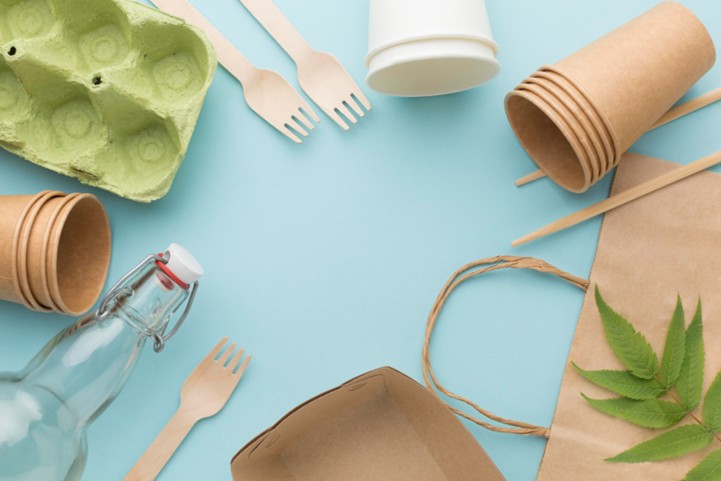What’s Next for Sustainable Packaging? Three Trends to Watch
August 2025, By Vitalija Narstyte
Sustainable packaging is not just a future goal – it is happening now and changing how brands operate. What was once a niche goal is now a key strategy, driven by stricter regulations and consumers who are more vocal about what they want (and what they will not accept).
This year, three themes are shaping the sustainable packaging trends: paperisation, reuse & refill, and smart packaging.
Paperisation – disappearing packaging solution.
In 2025, paper stepped into the spotlight. But not the type we scribble notes on. This is a new generation of paper-like materials designed to replace flexible plastics – think sturdy cardboard trays, moulded fibre containers, and even sachets made from seaweed. The idea sounds simple: use rigid, recyclable fibre instead of complex plastics. But the impact is anything but small. According to Packaging Europe, “paperisation has taken over brands’ portfolios” across food, beauty, and shipping.
One of the more intriguing developments is the rise of seaweed-based packaging. When I first encountered this, my initial thought was, why seaweed? It turns out that seaweed is an ideal material: it is fast-growing, regenerative, and requires no fresh water or fertiliser. Seaweed packaging has been appearing at stadiums, festivals, and cafés, and it is something people discuss, share, and feel good about using.
At the same time, industry giants across retail, food, and personal care are reconsidering their entire materials mix. While we will not always see the specifics on the shelf, behind the scenes, there is a strong push to develop packaging made from agricultural waste, hemp fibre, sugarcane pulp, and even daisy stems. I find it exciting to see this innovation from large companies because when they change, it affects millions of products and people. I look forward to the day when my everyday items – whether it is a cereal box, skincare bottle, or takeaway tray – come in more innovative and sustainable packaging as standard.
Refill & Reuse – packaging as a service
The refill and reuse model is becoming the blueprint for a smarter, more circular packaging system. With regulations tightening across Europe and the UK, the days of single-use everything are numbered.
Some of the biggest names in retail are taking this seriously, focusing on refill stations, returnable containers, and reusable packaging designed for real-world, high-volume use. Supermarkets like Tesco and Waitrose have trialled in-store refill zones for groceries and household staples. Even Coca-Cola has committed to increasing the share of drinks sold in returnable or refillable bottles.
What I find interesting is how this shift is encouraging brands to reimagine packaging not just as a container, but as a service. Instead of something we dispose of, packaging is becoming something we refill, return, and even cherish for longer. As a beauty enthusiast myself, I’ve been particularly pleased to see brands and retailers in that sector leading the way. Space NK, for example, has introduced refill stations and return schemes, making it easier for customers to recycle and reuse beauty product packaging.
Smart Packaging to reduce waste
Sometimes the most exciting innovations are not the ones we can see or touch – they are the ones quietly working behind the scenes to reduce waste before it even begins.
Researchers are currently developing battery-free sensors and tags that can detect food spoilage in real time. These intelligent materials can trigger the release of natural antioxidants or antimicrobial agents to slow decay. One prototype has been demonstrated to extend the shelf life of fish by up to two weeks without the need for electronics embedded in the food chain.
At the same time, we are witnessing advances in AI-powered sorting systems, digital watermarks, and smarter on-pack labels that can help identify and separate materials with much greater accuracy. Machine learning now takes on the heavy lifting, helping to increase recovery rates and reduce contamination when recycling.
As someone who often feels overwhelmed by how much waste can result from just a weekly shop, the idea that packaging could become proactive and actually help to preserve food, improve recycling, and reduce landfill waste excites me and fills me with optimism about the future.
Looking at these trends, it is clear that packaging is no longer just a functional necessity; it is a key signal of brand values and consumer trust. And with sustainability becoming part of everyday decision-making, the shift we are observing across materials and formats feels both exciting and essential.
If you would like to explore how your packaging strategy aligns with consumer expectations, our Say-Do Sustainability Study can help. Get in touch at info@mm-eye.com or use the form below to book a consultation.
